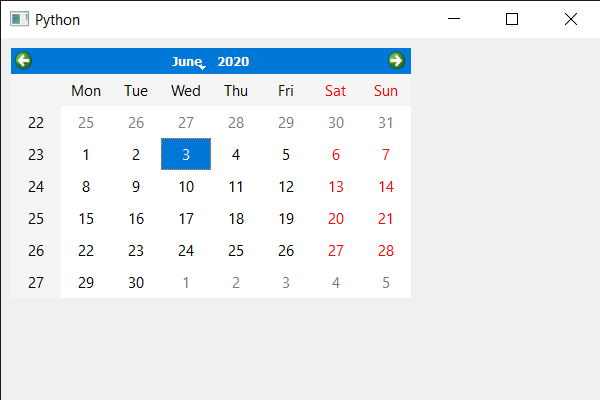En este artículo veremos cómo podemos hacer que QCalendarWidget sea una ventana activa. Una ventana activa es una ventana visible de nivel superior que tiene el foco de entrada del teclado. Hacer que sea una ventana activa establecerá que el widget de nivel superior que contiene este calendario sea la ventana activa.
Nota: La ventana debe estar visible, de lo contrario, activateWindow() no tiene efecto.
Para hacer esto, usaremos
activateWindowel método con el objeto QCalendarWidget.Sintaxis: calendar.activateWindow()
Argumento: no requiere argumento
Acción realizada: devuelve Ninguno
A continuación se muestra la implementación.
Python3
# importing libraries
from PyQt5.QtWidgets import *
from PyQt5 import QtCore, QtGui
from PyQt5.QtGui import *
from PyQt5.QtCore import *
import sys
class Window(QMainWindow):
def __init__(self):
super().__init__()
# setting title
self.setWindowTitle("Python ")
# setting geometry
self.setGeometry(100, 100, 600, 400)
# calling method
self.UiComponents()
# showing all the widgets
self.show()
# method for components
def UiComponents(self):
# creating a QCalendarWidget object
calender = QCalendarWidget(self)
# setting geometry to the calendar
calender.setGeometry(10, 10, 400, 250)
# setting name
calender.setAccessibleName("Geek Calendar")
# making it an active window
calender.activateWindow()
# create pyqt5 app
App = QApplication(sys.argv)
# create the instance of our Window
window = Window()
# start the app
sys.exit(App.exec())
Producción :
Publicación traducida automáticamente
Artículo escrito por rakshitarora y traducido por Barcelona Geeks. The original can be accessed here. Licence: CCBY-SA